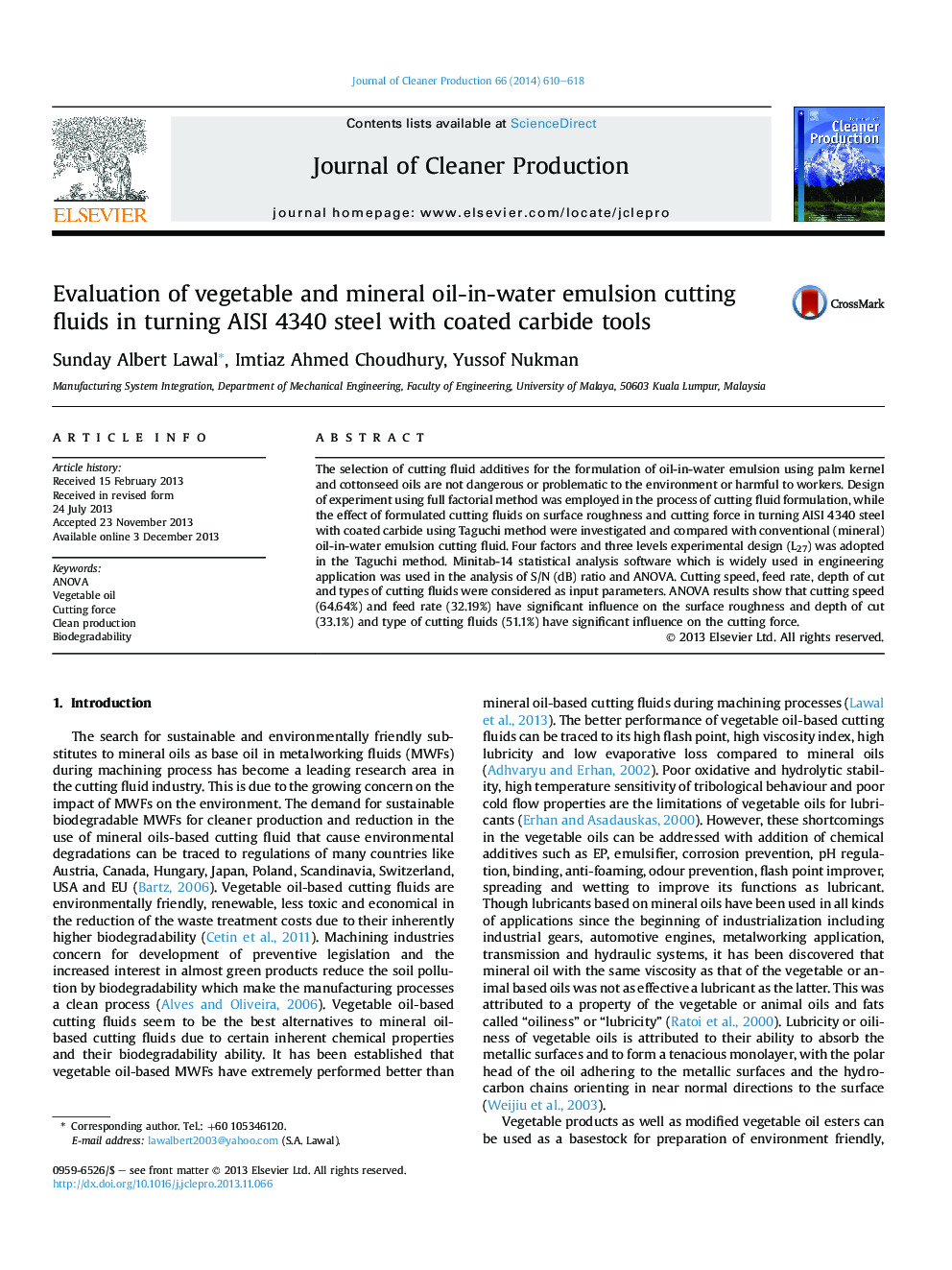| Article ID | Journal | Published Year | Pages | File Type |
|---|---|---|---|---|
| 1745030 | Journal of Cleaner Production | 2014 | 9 Pages |
The selection of cutting fluid additives for the formulation of oil-in-water emulsion using palm kernel and cottonseed oils are not dangerous or problematic to the environment or harmful to workers. Design of experiment using full factorial method was employed in the process of cutting fluid formulation, while the effect of formulated cutting fluids on surface roughness and cutting force in turning AISI 4340 steel with coated carbide using Taguchi method were investigated and compared with conventional (mineral) oil-in-water emulsion cutting fluid. Four factors and three levels experimental design (L27) was adopted in the Taguchi method. Minitab-14 statistical analysis software which is widely used in engineering application was used in the analysis of S/N (dB) ratio and ANOVA. Cutting speed, feed rate, depth of cut and types of cutting fluids were considered as input parameters. ANOVA results show that cutting speed (64.64%) and feed rate (32.19%) have significant influence on the surface roughness and depth of cut (33.1%) and type of cutting fluids (51.1%) have significant influence on the cutting force.
